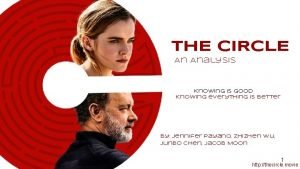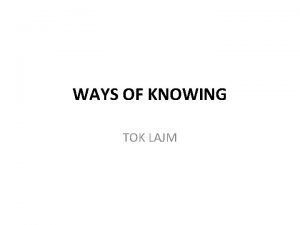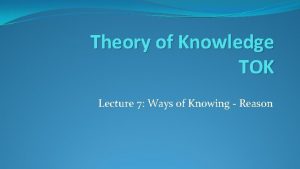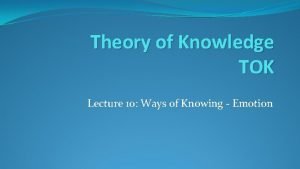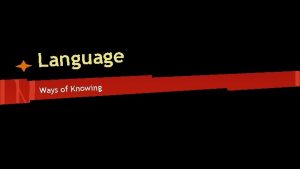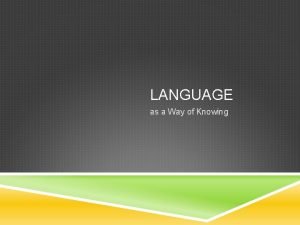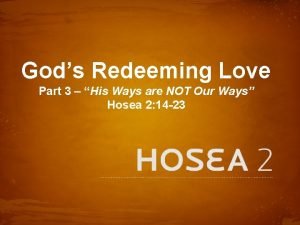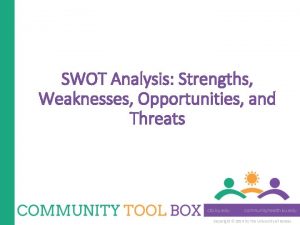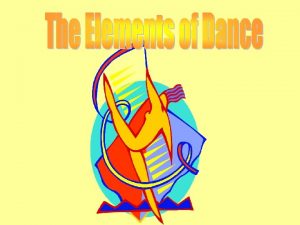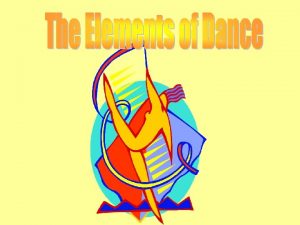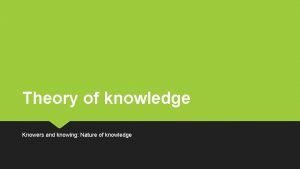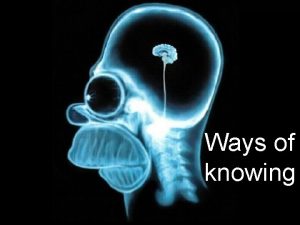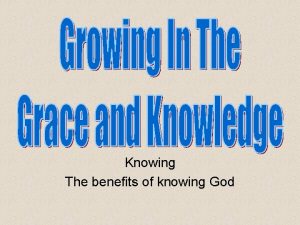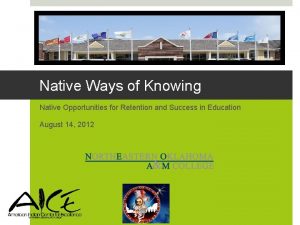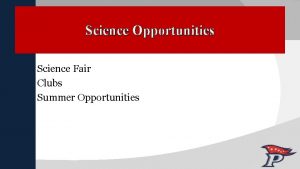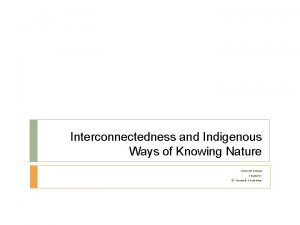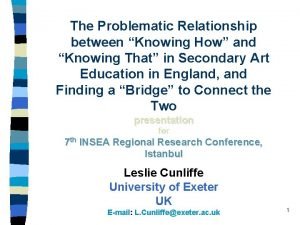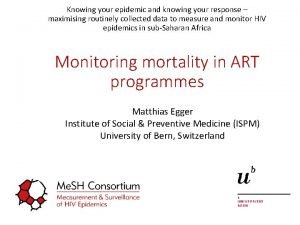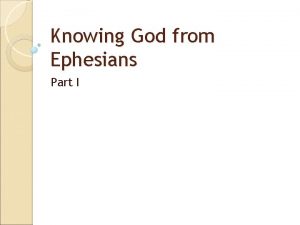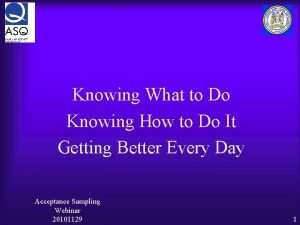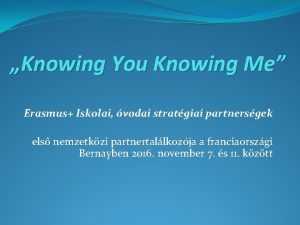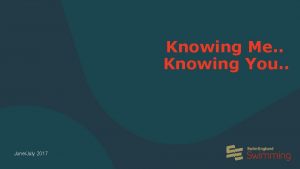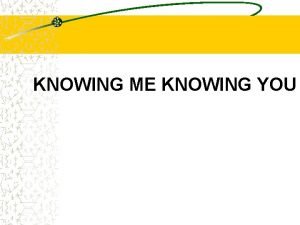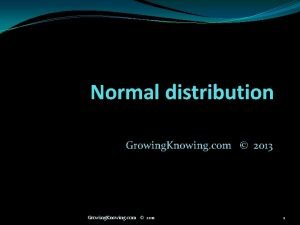Ways of knowing science and opportunities for student




















- Slides: 20

Ways of knowing science and opportunities for student learning Mark Olson Neag School of Education University of Connecticut NARST--Dallas, TX April 7 th, 2005 April 7, 2005 Olson NARST Presentation, Dallas 1

Motivation for study • Despite improvements in my students’ abilities in teacher education courses to make plans, construct assessments and reflect on their experiences… • Their teaching practices often appeared to be “traditional practice” in reformist clothing. April 7, 2005 Olson NARST Presentation, Dallas 2

Study Design • 5 secondary science interns (5 th year teacher education students). • Conducted extensive interviews around observations of consecutive lessons. • 4 sets of observations and interviews for each intern. • Collected available documents, audiotaped interviews and videotaped instruction. April 7, 2005 Olson NARST Presentation, Dallas 3

The framing questions How do interns “make sense” of science as subject matter? And, How does this impact their students’ opportunities to learn science? April 7, 2005 Olson NARST Presentation, Dallas 4

The framework • Paradigmatic and narrative ways of knowing (Bruner, 1985) form distinct dimensions along which science interns make sense of subject matter. April 7, 2005 Olson NARST Presentation, Dallas 5

Paradigmatic ways of knowing science A pattern explaining enterprise that: • Views particular events in relationship to general principles. • Focuses on arguments about the relationships between conceptual tools (often models) and scientific data (events). • Organizes events in relationship to an argument about general principles rather than a chronological order. April 7, 2005 Olson NARST Presentation, Dallas 6

Narrative ways of knowing science A theme illustrating enterprise that: • Views particular events in relationship to other particular events. • Places the animal, plant or object of study, and not the scientific activity, as the main character of a story. • Organizes events chronologically. April 7, 2005 Olson NARST Presentation, Dallas 7

Two-dimensional representation for understanding in science Paradigmatic understanding = N + P understanding P N Narrative April 7, 2005 Olson NARST Presentation, Dallas 8

Sam • Taught college-prep chemistry in rural high school setting. • Strong rapport with students & mentor. • Had autonomy in planning and teaching. • Worked hard to create academically rigorous lessons April 7, 2005 Olson NARST Presentation, Dallas 9

Sam’s lesson on the Rutherford gold-foil experiment radioactive Source • Led students through the sequence of the experiment • Asked students “What do you think happened next? ” • Used clay-ball activity to reinforce results of the experiment. April 7, 2005 Olson NARST Presentation, Dallas 10

Sam’s narrative construal of science • Sam engaged students in content that relied on memory and careful attention to detail. • Cognitive complexity was minimized and learning was the result of effort. • Examples served largely to illustrate subject matter. April 7, 2005 Olson NARST Presentation, Dallas 11

Carol • 7 th grade science intern in suburban MS. • Excellent rapport with students, mentor. • Had lots of autonomy to teach what and how she wanted. • Very hard worker who spent hours preparing lessons. April 7, 2005 Olson NARST Presentation, Dallas 12

Carol’s lessons on natural selection • Learning science well was a matter of being able to make good explanations of phenomena. • Carol helped students organize their ideas in terms of the model. April 7, 2005 Olson NARST Presentation, Dallas 13

Resistance to bug spray • Question: how do ants become resistant to bug spray? • A student claimed that “after they have been sprayed a lot, they get used to it and it doesn’t kill them. ” • Carol pushed students to use the model to explain this event. April 7, 2005 Olson NARST Presentation, Dallas 14

Carol’s paradigmatic & narrative approach • Carol worked hard to understand Natural Selection in a paradigmatic way. • She also sought a set of examples that would provide the basis for a rich narrative understanding as well. April 7, 2005 Olson NARST Presentation, Dallas 15

Key contrasts • Sam • Carol – The big idea of the lesson served as a theme. This theme was illustrated in each of the activities. – Planned carefully to prepare engaging activities – Examples were used to make subject matter memorable. – Students aimed reproduce story and do what chemists’ do. April 7, 2005 – The big idea of the lesson served as the central principle. Patterns were to be explained in each of the activities. – Planned carefully to devise simple models. – Examples used to explain & test model. – Students aimed to make good explanations. Olson NARST Presentation, Dallas 16

Implications for these interns • Because Sam worked to understand narratively alone--the subject matter was given structure by the textbook and personal experiences in school. • He had vague notions of needing to know “more” science & to find “better” activities. April 7, 2005 • Because Carol worked to understand both paradigmatically & narratively--the subject matter was a dynamic proving ground. • She identified clearly what didn’t make sense, and actively sought reconciliation with her emerging paradigmatic understandings. Olson NARST Presentation, Dallas 17

Instructional representations in practice Paradigmatic X robust understanding X Carol Sam X Narrative April 7, 2005 Olson NARST Presentation, Dallas 18

Opportunities to learn • Instructional representations of science that are largely narrative provide opportunities to learn only stories of science. • Representations that require coordination between stories and models provide opportunities to learn to explain phenomena. April 7, 2005 Olson NARST Presentation, Dallas 19

Implications for my work as a teacher educator • Subject matter understanding matters. • Efforts to address “needing to know more” can be specified more precisely: – Needing more narrative knowledge (rich sets of examples) – Needing more paradigmatic knowledge (principled understanding) • Need to explicitly facilitate the coordination between narrative and paradigmatic construals of science. April 7, 2005 Olson NARST Presentation, Dallas 20
 The circle analysis
The circle analysis Not knowing is worse than knowing
Not knowing is worse than knowing 8 ways of knowing tok
8 ways of knowing tok 7 ways of knowing
7 ways of knowing Ib tok essay questions 2022
Ib tok essay questions 2022 Tok emotion
Tok emotion Elpoe meaning
Elpoe meaning Language as a way of knowing
Language as a way of knowing Gods ways are not our ways
Gods ways are not our ways Opportunities and threats of a person
Opportunities and threats of a person Sample swot analysis of a school in the philippines
Sample swot analysis of a school in the philippines My favourite subject english
My favourite subject english Realising opportunities student
Realising opportunities student 282 ways to pass the earth science regents
282 ways to pass the earth science regents Dance is a way of knowing and communicating
Dance is a way of knowing and communicating Bound and free movements
Bound and free movements Nature of knowledge and knowing
Nature of knowledge and knowing Fspos
Fspos Typiska drag för en novell
Typiska drag för en novell Tack för att ni lyssnade bild
Tack för att ni lyssnade bild Vad står k.r.å.k.a.n för
Vad står k.r.å.k.a.n för
